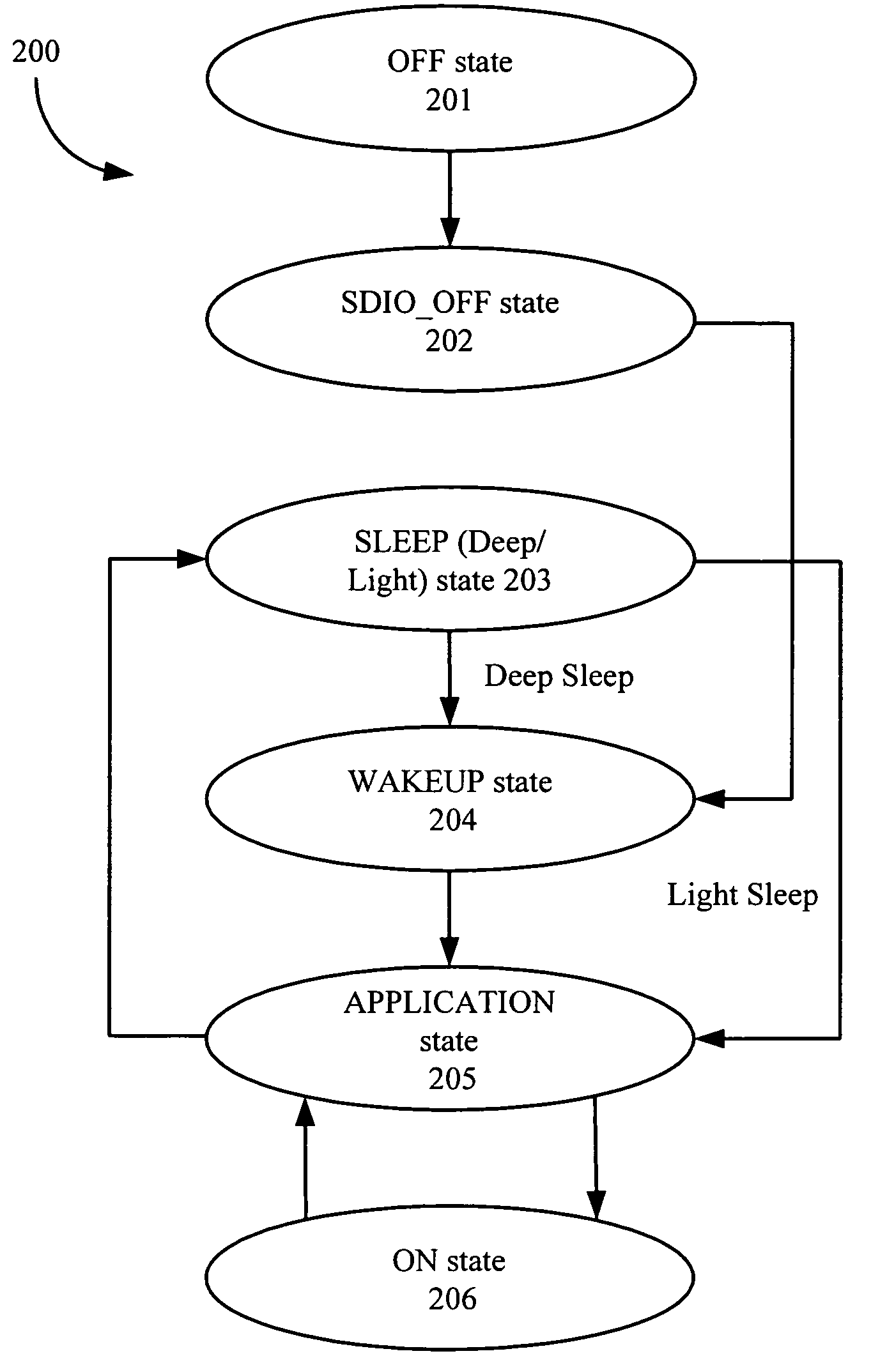Reducing power consumption in embedded systems by controlling voltage based on system state and partition designation
a technology of embedded systems and partitions, applied in the field of embedded systems, can solve the problems of undetectable power consumption, software may not know the optimal time to make voltage and frequency changes, and cannot control the end user of the system, and achieve the effect of efficient tuning of voltages across partitions
- Summary
- Abstract
- Description
- Claims
- Application Information
AI Technical Summary
Benefits of technology
Problems solved by technology
Method used
Image
Examples
Embodiment Construction
System Partitioning
[0029] A highly integrated, single chip embedded system can include multiple functional areas with diverse voltage and frequency requirements. In one embodiment, the embedded system can be divided into partitions, wherein components within a partition have similar power profiles (e.g. voltage and frequency requirements). For example, FIG. 1 illustrates an exemplary embedded system 100 that includes four partitions: a radio partition 101, a system control partition 102, a central processing partition 103, and a system interface partition 104. Note that other embedded systems may include more or fewer partitions associated with the same or identical functions. In one embodiment, the pads of embedded system 100 connecting to specific components of partitions 101-104 can be characterized as part of those partitions (and thus are not shown separately).
[0030] In embedded system 100, radio partition 101 can include functions related to radio operation. For example, ra...
PUM
 Login to View More
Login to View More Abstract
Description
Claims
Application Information
 Login to View More
Login to View More - R&D
- Intellectual Property
- Life Sciences
- Materials
- Tech Scout
- Unparalleled Data Quality
- Higher Quality Content
- 60% Fewer Hallucinations
Browse by: Latest US Patents, China's latest patents, Technical Efficacy Thesaurus, Application Domain, Technology Topic, Popular Technical Reports.
© 2025 PatSnap. All rights reserved.Legal|Privacy policy|Modern Slavery Act Transparency Statement|Sitemap|About US| Contact US: help@patsnap.com



